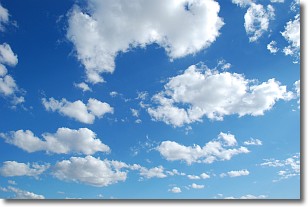Weather Alert in Iowa
Flood Watch issued July 11 at 8:59PM CDT until July 15 at 2:09AM CDT by NWS Quad Cities IA IL
AREAS AFFECTED: Keokuk
DESCRIPTION: ...The National Weather Service in Quad Cities IA IL has issued a Flood Watch for the following rivers in Iowa... North Skunk River near Sigourney affecting Keokuk County. * WHAT...Flooding is possible. * WHERE...North Skunk River near Sigourney. * WHEN...From late Saturday night to early Tuesday morning. * IMPACTS...At 18.0 feet, Water affects most agricultural land near Sigourney. * ADDITIONAL DETAILS... - At 8:30 PM CDT Friday the stage was 3.0 feet. - Forecast...Flood stage may be reached early Sunday morning. - Flood stage is 16.0 feet.
INSTRUCTION: If you are in the watch area, remain alert to possible flooding. The next statement will be issued by Saturday evening at 900 PM CDT.
Want more detail? Get the Complete 7 Day and Night Detailed Forecast!
Current U.S. National Radar--Current
The Current National Weather Radar is shown below with a UTC Time (subtract 5 hours from UTC to get Eastern Time).

National Weather Forecast--Current
The Current National Weather Forecast and National Weather Map are shown below.

National Weather Forecast for Tomorrow
Tomorrow National Weather Forecast and Tomorrow National Weather Map are show below.

North America Water Vapor (Moisture)
This map shows recent moisture content over North America. Bright and colored areas show high moisture (ie, clouds); brown indicates very little moisture present; black indicates no moisture.

Weather Topic: What is Condensation?
Home - Education - Precipitation - Condensation
 Next Topic: Contrails
Next Topic: Contrails
Condensation is the process which creates clouds, and therefore
it is a crucial process in the water cycle.
Condensation is the change of matter from a state of gas into a state of liquid,
and it happens because water molecules release heat into the atmosphere and
become organized into a more closely packed structure, what we might see as
water droplets.
Water is always present in the air around us as a vapor, but it's too small for
us to see. When water undergoes the process of condensation it becomes organized
into visible water droplets. You've probably seen condensation happen before on the
surface of a cold drink!
Next Topic: Contrails
Weather Topic: What are Cumulonimbus Clouds?
Home - Education - Cloud Types - Cumulonimbus Clouds
 Next Topic: Cumulus Clouds
Next Topic: Cumulus Clouds
The final form taken by a growing cumulus cloud is the
cumulonimbus cloud, which is very tall and dense.
The tower of a cumulonimbus cloud can soar 23 km into the atmosphere, although
most commonly they stop growing at an altitude of 6 km.
Even small cumulonimbus clouds appear very large in comparison to other cloud types.
They can signal the approach of stormy weather, such as thunderstorms or blizzards.
Next Topic: Cumulus Clouds
Current conditions powered by WeatherAPI.com




